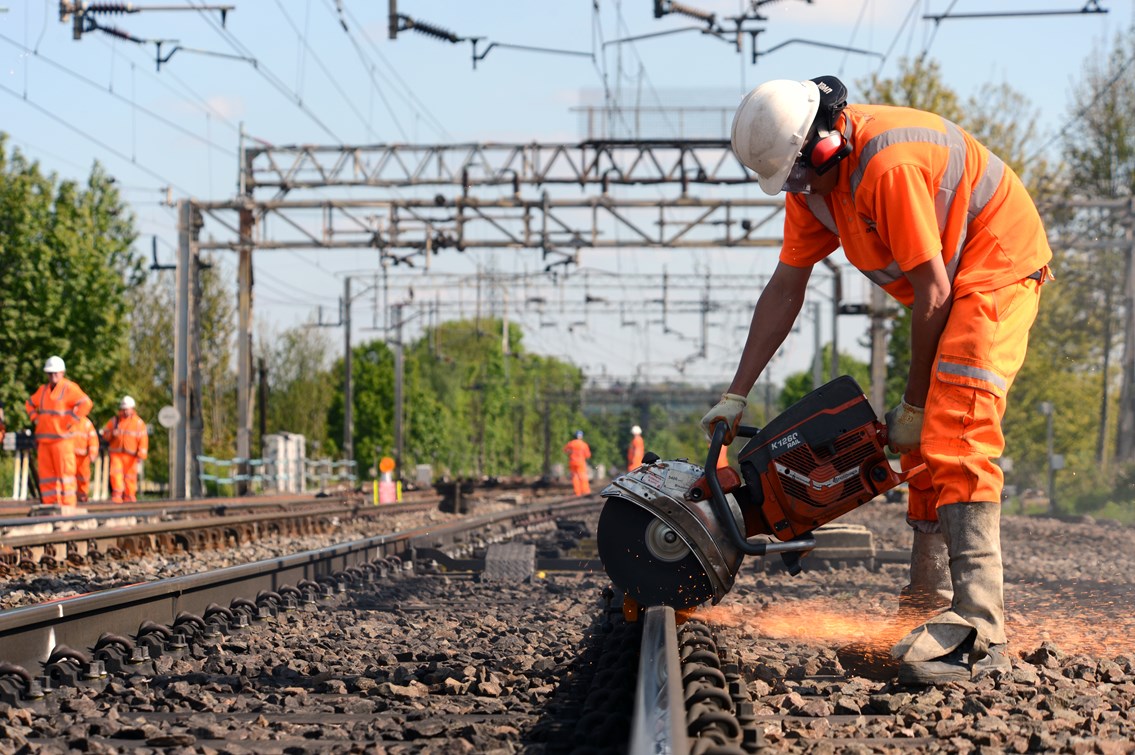Friday 22 May 2015
Work to electrify railway between Bedford and Sheffield enters next phase
- Region & Route:
- | Southern
Work to electrify the Midland Main Line between Bedford and Sheffield has entered its next phase as work on the track is now underway.
The £1.6bn investment programme will improve connections between major towns and cities from London through the East Midlands to South Yorkshire, paving the way for faster, quieter, greener electric trains.
Piling work for the equipment, which will eventually support the wires that will power electric trains, started this month between Bedford and Kettering.
Most of the work will be carried out overnight so the railway can remain open for passenger and freight services during large parts of the construction work. The piling work inevitably involves some noise, which may cause lineside residents some disturbance. Residents living within 200 metres of the work have been notified via letter.
Steve Hughes, area director for Network Rail, said: “This is a major investment in the region’s railway that will transform travel for thousands of passengers on this route.
“Work has already been completed on a number of bridges along the route to make room for the electrification wires to pass underneath. Now, we are starting work on the track to install the equipment.
“This work will take a Victorian railway into the twenty-first century and will allow greener, smoother, and faster trains to run. We thank our neighbours for their patience.”
Piling work will be followed by upgrades to bridges, tunnels and parapets.
Notes to editors
Benefits of electrification:
The electrification programme will stimulate economic growth across the region by improving connections between towns and cities, with longer trains also able to carry 20 per cent more passengers.
Electric trains are cheaper to operate than diesels and produce around 25 to 30 per cent less carbon. They are lighter and require less maintenance so do less damage to the track.
Electric trains also improve the air quality in pollution in areas such as city centres and main line stations. They are also much quieter.
Contact information
Passengers / community members
Network Rail national helpline
03457 11 41 41
Latest travel advice
Please visit National Rail Enquiries
Journalists
Network Rail press office - Sam Kelly
Media Relations Manager
Network Rail
03308543835
0779 564 7014
sam.kelly@networkrail.co.uk
About Network Rail
We own, operate and develop Britain's railway infrastructure; that's 20,000 miles of track, 30,000 bridges, tunnels and viaducts and the thousands of signals, level crossings and stations. We run 20 of the UK's largest stations while all the others, over 2,500, are run by the country's train operating companies.
Usually, there are almost five million journeys made in the UK and over 600 freight trains run on the network. People depend on Britain's railway for their daily commute, to visit friends and loved ones and to get them home safe every day. Our role is to deliver a safe and reliable railway, so we carefully manage and deliver thousands of projects every year that form part of the multi-billion pound Railway Upgrade Plan, to grow and expand the nation's railway network to respond to the tremendous growth and demand the railway has experienced - a doubling of passenger journeys over the past 20 years.
Follow us on Twitter: @networkrail
Visit our online newsroom: www.networkrailmediacentre.co.uk

